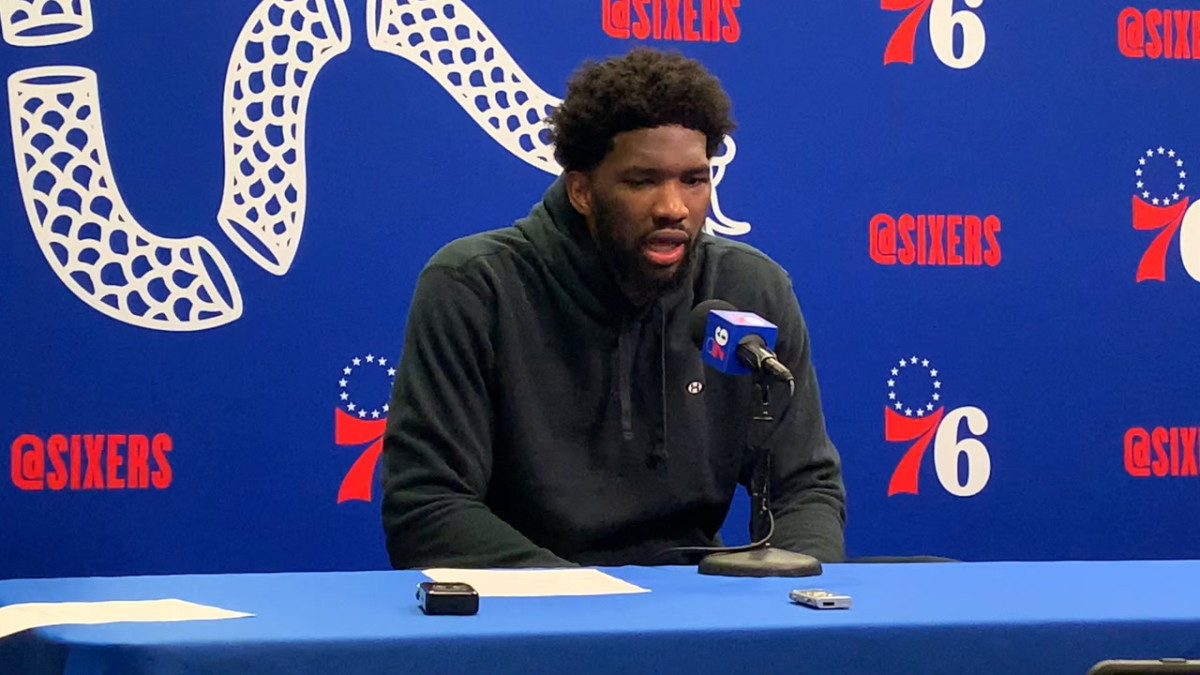
76ers’ Joel Embiid injury return gets ‘pretty confident’ boost from Nick Nurse
We’ve seen Cam Payne help the Sixers, but how has the Pat Bev deal aged for the Bucks?
Daryl Morey sent shockwaves in Philadelphia at the trade deadline, shipping fan favorite Patrick Beverley off to the one of their rivals, the Milwaukee Bucks, for Cameron Payne and a second-round draft pick.
Understandably, the move was immediately met with pushback from fans. Not only was Beverley a fan favorite, but he was playing some of his better basketball with several key rotation players out. Sending a current contributor to a rival is a tough sell, after all.
Over a month later, Beverley and Payne have gotten a chance to play with their new teams, which raises the question: How has this trade aged for both sides?
The Pat Bev experience in Milwaukee
At the time of the deal, the Milwaukee Bucks were 34-19, a respectable record at first glance, but the team had serious issues. They were fresh off firing their rookie head coach, Adrian Griffin, replacing him with our favorite coach, Doc Rivers. While the offense showed serious promise behind their star duo of Damian Lillard and Giannis Antetokounmpo, the defense was lackluster at best — a change from the Bucks’ identity in past seasons.
On paper, trading for Beverley made sense on various levels. On the court, Beverley was a defensive-minded guard, capable of switching and staying in front of most players, something that the Bucks lacked for most of the year. Additionally, Beverley could provide a voice and toughness for a locker room that seemingly lacked both at the time.
Since the deal, the Bucks have progressed in the right direction, winning 12 of their past 17 games. Beverley has averaged 5.1 points, 2.2 assists and 2.9 rebounds in 19.6 minutes per game. He’s shot 34.4 percent from the field and 34 percent from three.
From the Bucks’ perspective, it’s hard to be upset with what they’ve gotten compared to what they gave up. Beverley isn’t a basketball savior (unless you’re a Play-In team), but he’s helped their defense and has been a serviceable rotation player. Bev’s impact probably goes beyond basic stats, as he’s helped solidify their shaky bench unit as well. Not a bad short-term return for a bench player and a distant second-round pick.
Cameron Payne finding a new home with the Sixers
Prior to the trade, the Sixers had a record of 30-20. They had a much better record a few weeks prior to it, but at this time Joel Embiid had missed a month due to injury and they started to rack up some L’s. The Sixers’ offense in particular was a huge problem at this point as the team lacked shot creators/makers outside of Tyrese Maxey.
It was hard to understand at the time, but there was plenty of reason behind the Sixers making this move from a basketball standpoint. While Payne isn’t the defender Beverley is, he’s a much more capable offensive player with or without the ball in his hands. Payne is capable of making plays, and hitting shots at a higher clip — 37.1 percent from three on 4.6 attempts per game as a Sixer compared to Beverley’s 32.1 percent on 2.3 attempts as a Sixer.
Since the trade, the Sixers have fallen considerably in the standings. However, Payne has been one of the silver linings on what has otherwise been a dire time for Sixers fans. His averages have shot up across the board since his arrival, averaging 10.5 points, 3.2 assists, and 1.1 rebounds in nearly 20 minutes of playing time. Payne’s offensive skills have translated well to the Sixers, providing another capable ball handler and shooter to an offense that desperately needs it.
Speaking of which, Payne has helped the Sixers use Tyrese Maxey more off-ball, something that the team should/has experimented with. Most would label a deal as a win if you can make a move that makes things easier for your key guys alone.
Don’t forget about the draft pick
Recouping draft capital is a big part of why the Sixers dealt Beverley, who is a 34-year-old veteran on an expiring contract. The Sixers acquired the Bucks’ 2027 second-round draft pick in this deal. A distant second-round draft pick from a contender is far from a juicy asset, but today’s trade market has valued these picks in recent transactions; mostly for their ability to negotiate below the first-round draftee salary scale, as teams look to save as much as they can under the new CBA.
The Verdict
It’s incredibly rare for win-win trades in the NBA, especially given time. The Pat Bev-Cam Payne deal might be one of the better examples of one at a small scale, however. The Milwaukee Bucks added a veteran with a skillset they needed, which has helped them cobble together some wins. Meanwhile, Payne has simply been one of the best Sixers on an injury-riddled roster, along with a draft pick in an asset-deprived market.
It’s hard to pick a clear “winner” in this deal, but I’d imagine most Sixers fans would agree that the deal has aged well from the initial reaction.
Leave a Reply